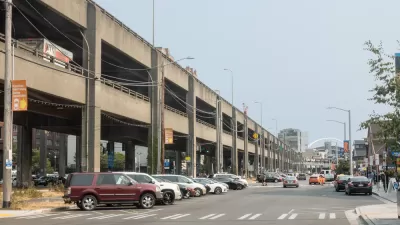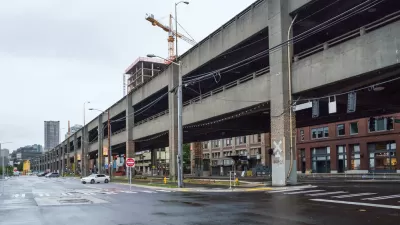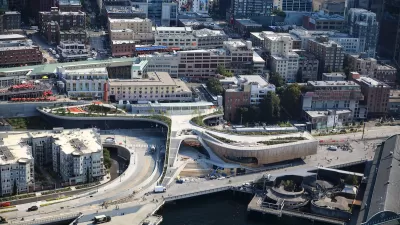Sections of the Alaskan Way Viaduct will begin closing on January 4, 2019. The city's new tunnel to replace the route doesn't open until February.

The long-awaited tunnel to replace the Alaskan Way Viaduct will open in February, but not before the Alaskan Way Viaduct closes. Stephen Fesler provides details on the "Seattle Squeeze."
The first impacts from the closure of the SR-99 viaduct will begin on January 4th with the southbound S Atlantic St off-ramp and northbound Royal Brougham Way on-ramp. Other on- and off-ramps as well as the highway mainline will remain open until 10pm on January 11th when the remainder of the viaduct will fully closes.
The Washington State Department of Transportation (WSDOT) expects that the full viaduct closure will send an estimated 90,000 daily vehicle trips to other roads or convert to other types of trips until the new deep-bore tunnel opens in February.
As for what the state and the city will have to do to make up the difference in the meantime, Fesler provides lots of details:
WSDOT is planning to convert I-5 southbound high occupancy vehicle (HOV) lanes to general purpose lanes from Mercer Street to S Corson St just for good measure–keeping motorists happy and suffering in equal measure while ensuring transit is exceptionally slow on I-5.
Moreover:
The Seattle Department of Transportation (SDOT) will roll out temporary transit lanes on Cherry Street, 4th Ave S, Aurora Avenue, and the West Seattle Bridge ahead of the viaduct closure.
Fesler notes that some of these changes could become permanent, like the measures taken in New York City to address the L Train closure. An earlier Planetizen post by Philip Rojc offers more insight and background on the Seattle Squeeze.
FULL STORY: Extra Water Taxi Service and a Few Temporary Bus Lanes Planned for Seattle Squeeze

Alabama: Trump Terminates Settlements for Black Communities Harmed By Raw Sewage
Trump deemed the landmark civil rights agreement “illegal DEI and environmental justice policy.”

Planetizen Federal Action Tracker
A weekly monitor of how Trump’s orders and actions are impacting planners and planning in America.

Why Should We Subsidize Public Transportation?
Many public transit agencies face financial stress due to rising costs, declining fare revenue, and declining subsidies. Transit advocates must provide a strong business case for increasing public transit funding.

Understanding Road Diets
An explainer from Momentum highlights the advantages of reducing vehicle lanes in favor of more bike, transit, and pedestrian infrastructure.

New California Law Regulates Warehouse Pollution
A new law tightens building and emissions regulations for large distribution warehouses to mitigate air pollution and traffic in surrounding communities.

Phoenix Announces Opening Date for Light Rail Extension
The South Central extension will connect South Phoenix to downtown and other major hubs starting on June 7.
Urban Design for Planners 1: Software Tools
This six-course series explores essential urban design concepts using open source software and equips planners with the tools they need to participate fully in the urban design process.
Planning for Universal Design
Learn the tools for implementing Universal Design in planning regulations.
Caltrans
Smith Gee Studio
Institute for Housing and Urban Development Studies (IHS)
City of Grandview
Harvard GSD Executive Education
Toledo-Lucas County Plan Commissions
Salt Lake City
NYU Wagner Graduate School of Public Service





























